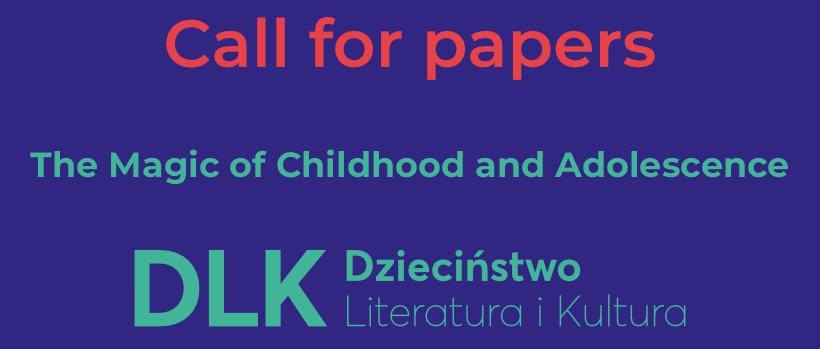CALL FOR PAPERS 2/2023

The Magic of Childhood and Adolescence
In the next issue of the journal “Childhood: Literature and Culture,” we invite you to reflect on the motifs of magic, broadly understood, in various cultural texts: literary works, films, TV series, video games, theater performances, fine arts, etc. We are inspired by the academic conference “Abrakadraba! Magia w literaturze dziecięcej, młodzieżowej i fantastycznej” [Abracadabra! Magic in Children’s and YA Literature, Fantasy, and SF], organized in April 2022 by the Scholarly Circle of Fairy Tales, Children’s and Youth Literature, and Fantasy of the University of Warsaw and the Museum of Children’s Books – a special department of the Warsaw Public Library – Central Library of Mazovia Province, Poland.
Magic is a mysterious and ambiguous phenomenon. In her monograph The Anthropology of Magic, published in 2009, Susan Greenwood argued that theories of magic tend to focus on contrasting it with logical and scientific reasoning, thus ignoring its specificity as an empirical and imaginary way of thinking. According to Greenwood, we need the language of imagination to fully experience ourselves and the world. In the upcoming issue, we would like to explore how magic, understood variously, shapes the way children and people on the verge of adulthood perceive reality – not only as hypothetical recipients, but alsoas heroes and heroines of cultural texts.
Delighting and tempting with limitless possibilities, magic can also be terrifying. The sorceress Yennefer in The Blood of Elves by Andrzej Sapkowski explains: “magic is Chaos, Art and Science. It is a curse, a blessing, and progress. It all depends on who uses magic, how they use it, and to what purpose.” As the authors of various cultural texts demonstrate, it requires openness and sensitivity to the Other and the New. Those who easily find magic are usually the youngest. According to Ingmar Bergman, “The prerogative of childhood is to move unhindered between magic and oatmeal porridge, between boundless terror and explosive joy.” Therefore, we invite you to uninhibited exploration (following the example of C.S. Lewis’ Lucy) of enchanted worlds created by both Polish and foreign authors, who write not only for young people but also for adults.
We offer, among others, the following issues and thematic fields in the context of childhood and adolescence:
- transformations of magical heroes and heroines,
- initiations and initiation rituals,
- magic as a child’s way of experiencing reality and a way of dealing with difficult emotions or overcoming trauma,
- magical lands, magical worlds - magical spaces in cultural texts, world-creating strategies,
- magical realism and idyllic everyday magic,
- the magic of diversity and multiculturalism - inclusiveness of fairy-tale worlds, magic and queer studies,
- magic from the anthropological perspective (folk beliefs, superstitions, and world mythologies),
- witches, fairies, elves, dwarfs, wizards, and sorceresses - characters who wield magic,
- unicorns, dragons, centaurs - magical creatures and mythical beasts,
- hat, broom, and cauldron - magical attributes,
- magicians and witches: magic and gender studies,
- magic and technology, urban fantasy,
- spells, divination, and astrology,
- the elements and the force of nature in the context of magical thinking,
- magical wild child - anti-pedagogy,
- magic that connects generations - classic texts of children’s and YA fantasy and speculative fiction.
We also invite you to submit texts unrelated to the issue’s subject matter to our Varia and Review Articles sections.
Articles submission deadline: 31.05.2023.





